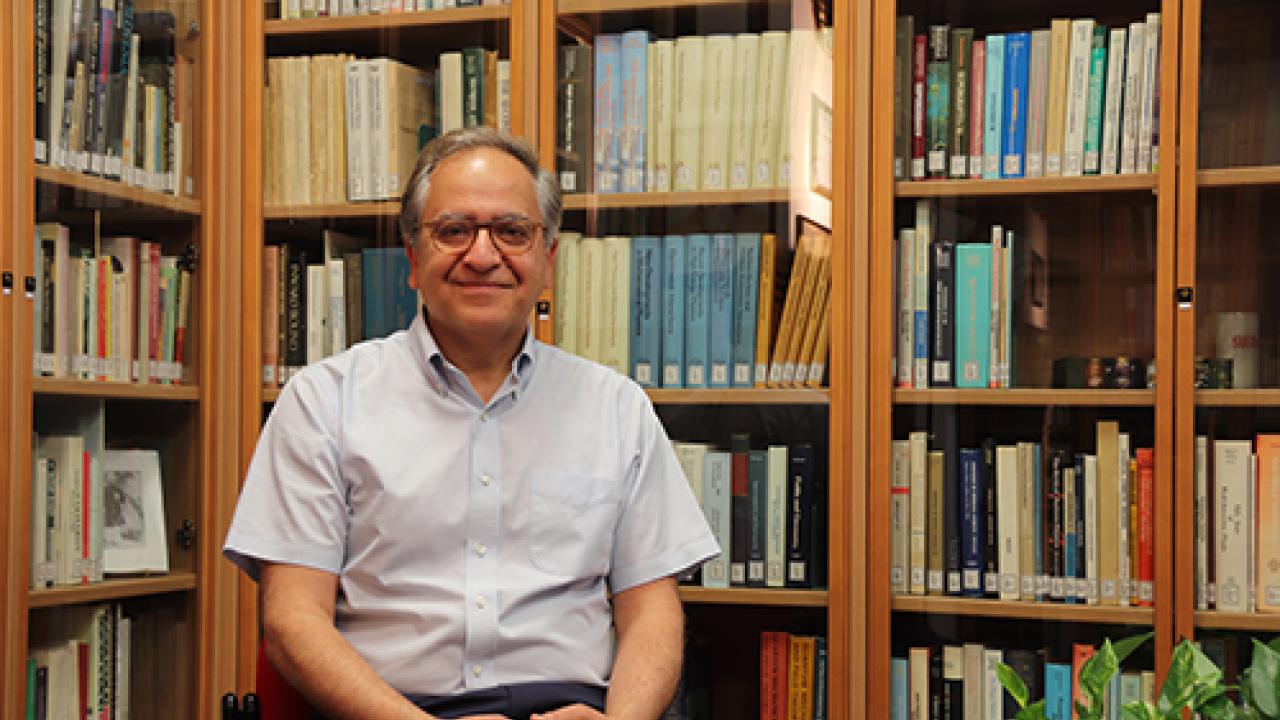
ICTP has appointed theoretical physicist Cumrun Vafa as a distinguished staff associate, formalizing ties with one of the world's top string theorists.
Vafa first came to ICTP in 1984 as a participant in a high energy workshop. "I was quite enamored with the environment, and also amazed by this vision of Abdus Salam in creating the centre," recalls Vafa in a recent interview with ICTP. "It was a great oasis of interaction for physicists from the Third World to the modern world, in a high-caliber environment. Coming from Iran, I found this amazing." Vafa has continued his interactions with ICTP over the years as a member of its scientific advisory board, and as an associate. His new designation as a distinguished staff associate ensures a continuation of his connection to ICTP.
The connection is timely, as ICTP prepares to launch the Institute for Geometry and Physics (IGAP), a joint, interdisciplinary venture with the International School for Advanced Studies (SISSA). Vafa will deliver the inaugural scientific talk at a ceremony taking place on 9 July.
Vafa said of the institute, "I think it is a great idea, because it brings focus on the most exciting developments in the past 50 years in theoretical physics, which is the relation between physics and geometry. Physics and geometry together have proved to be an amazingly powerful tool in answering puzzles in physics and shedding light, at the same time, on deep questions in mathematics."
Excerpts from the video interview are below:
Your main research area is string theory, a theory with the ambitious goal to unify everything from the atom to galaxies. Do you think such a global harmony and order do actually exist?
I do believe the unity of physics is more and more evident by what we learn about nature. The fact that the smallest pieces of matter and things at the scale of the whole universe are governed by the same rules of physics and the relations between them has been more and more demonstrated by experiments. So, we believe in the unity of physics in all scales and string theory is a framework which is ambitious and tries to unify all these different aspects of physics from the very small to the very large and for all different types of particles and to unify them into one object, one reality.
What links geometry and physics and why is this new ICTP-SISSA institute important?
The connection between geometry and physics goes all the way back to the Greek mathematicians and philosophers. They thought that understanding platonic solids would explain all the elements and all the natural forces and laws. That was a fascination with geometry and they believed that it had something to do with the reality around us. That aspect began to become more and more evident especially in the past century when Einstein found that geometry can explain the gravitational force, so geometry is a way to think about gravity. We began to become more used to embracing geometrical explanations of physical phenomena. In the past 50 years in the context of string theory, we have seen how true and how important that relation is: geometry implies physics and physics implies structures and geometry.
What attracted you to physics?
When I was young, in elementary school, I was always baffled by things around me even as simple as why doesn’t the moon fall on people heads. I was struggling to try to have a good understanding for it for myself. When I was first learning about 3D geometry they told us there are three things you have to know: width, length and height to define an object. To me, the fact that they were three stuck in my head and it raised the question, why not two, why not four? The question of the number of dimensions even as an elementary school kid came to mind. I didn’t have any particular motivation to ask it other than kind of the obvious “why three”?
So these were the beginnings and then later I remember when I saw some of my elder cousins working on their physics problems, using equations to determine the trajectory of a projectile and see where it will land. I was shocked that they can use mathematical equations, simple equations to find where this thing falls. I was finding that amazing! The fact that simple math gives you such a powerful prediction was very exciting to me. That’s when I began to think about science, but it took me a while to think about science as a career. It was more as a passion. When I went to college I was originally planning to study other things, but I found that the other subjects I was studying were not as exciting to me as science. As science and math were the most exciting, I went back to them and concentrated on both math and physics.
Cumrun Vafa is the Hollis Professor of Mathematicks (sic) and Natural Philosophy at Harvard University. He won ICTP’s Dirac Medal in 2008 along with Juan Maldacena and Joseph Polchinski for fundamental contributions to superstring theory. In 2017, he received the Breakthrough Prize in Fundamental Physics, together with Polchinski and Andrew Strominger, for transformative advances in quantum field theory, string theory, and quantum gravity. Vafa is a member of ICTP’s Scientific Council.
















